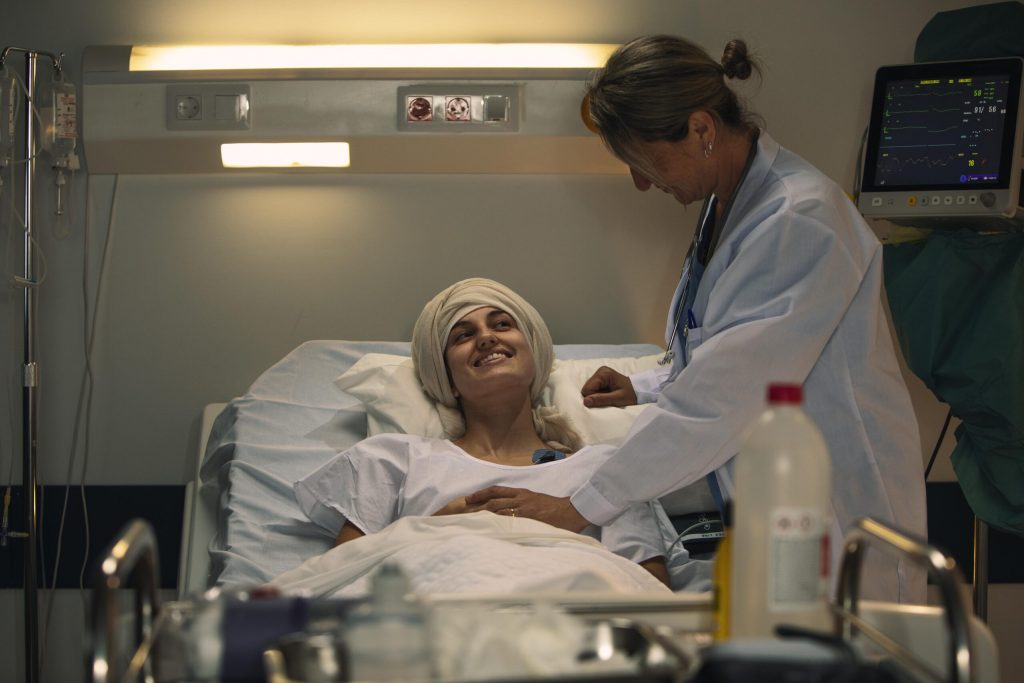
Radiation therapy
Radiation therapy uses high-energy radiation delivered by a machine called a linear accelerator. Radiotherapy can use in varying doses calculated in to serve different purposes. Radiation therapy mainly finds its use in Cancer treatment. Other uses can be for some benign growths or even bone marrow transplants. Doctors prescribe the treatment called radiation oncologists, who are different from the ‘Radiologists’ who are primarily involved in imaging and diagnosis. It can either be used as a lone therapy or in combination with other modes of treatment. The basis of the therapy is the death of cancer cells or the arrest of their division due to damage to the cell’s genetic material. The radiation can help reduce the tumour size or even cure it.
Types of radiation therapy
Radiation therapy can be of different types depending on the radiation’s use and mode of delivery. The choice of radiotherapy, in any case, will be based on the specific requirements and characteristics of the cancer growth.
Based on the purpose of radiotherapy, it can be of the following types:
- Therapeutic: to cure or treat
- Palliative: to alleviate symptoms like pain etc.,
- Adjuvant: in addition to other cancer treatment modalities.
- Neoadjuvant: when radiation is given before surgery to shrink a tumour.
Based on how the radiation is delivered, it can be
- Internal beam or brachytherapy: it involves the use of radioactive rods which are implanted in the tumour area. These rods can stay in place for days to months or even permanently.
The radiation can also be administered by intravenous administration of radioactive molecules.
- Intraluminal brachytherapy
- Interstitial brachytherapy
- Intracavitary brachytherapy
- External beam radiation or teletherapy, wherein there is radiation from a distant source, is made to fall on the cancer site. It is delivered by unique systems like Cobalt 60 and linear accelerator, among several others. The choice depends on that of the surgeon. He decides the dose of radiation and the site of its delivery.
How does radiotherapy work?
Radiotherapy uses high-energy radiation to destroy cancer cells. The radiation in radiotherapy causes destruction and denaturation of the DNA of the cancer cells. Radiotherapy is given in cycles over some time. The treatment pattern ensures that the cancer cells with damaged DNA do not recover, and the changes in the DNA become irreversible. The damage can cause the cells to die or stop multiplying, thus reducing the tumour size. It may take a few weeks for the cells to start dying, but the process may continue for weeks after the therapy has stopped. The success of therapy depends on whether the tumour is radiosensitive or not. The tumour and surrounding tissue are irradiated so that the radiation area can also tackle any micro invasion.
Side effects of radiotherapy
Radiotherapy targets only cancer, but the general body tissues are also get affected by the radiation. The resistance to radiation of different body tissues varies; therefore, the side effects can vary.
These side effects damage the normal tissues surrounding the diseased area.
The number and severity of side effects are decreased with the help of more targeted and precise therapy.
The most typical side effects are fatigue, nausea, vomiting, and hair loss.
Some specific side effects depending on the region can be:
- head and neck
- Nausea
- Hairloss
- Mouth ulcers
- Tooth decay
- Chest region
- Difficulty breathing
- Shoulder stiffness
- Permanent scarring of the lung is called radiation fibrosis.
- Abdomen
- Nausea
- Vomiting
- Diarrhoea
- Pelvis
- Problems in fertility
- Erectile dysfunction
- Menopausal symptoms
Sometimes after the radiation therapy to a particular part, there may be swelling, irritation and rash on the skin called a radiation recall rash.
The degree and symptoms of the side effects can vary from case to case based on the response of the individual, type of cancer and the treatment being given.
The side effects can be short-term or long-term. The duration depends on the ability of the affected body tissue to repair itself. Sometimes if the cells have a low capacity to repair themselves or multiply, the damage can be permanent.
You may experience the start of side effects by 2-3 weeks after the commencement of the radiation therapy. They usually continue throughout the treatment and even a few months after it. The side effects are maximum at the end of 2 weeks after stoppage of the treatment.
Feeling normal may take weeks to months. Apart from the physical side effects, you may also feel emotional side effects. Not being able to resume regular activity or participate in social events can also impact your mental health. It is vital to seek the help of a therapist or psychiatrist apart from good family support for a good recovery.
Management of side effects
Side effects are a big challenge in the management of cancer patients. Some of them can be managed by general care. However, other symptoms need medication and active treatment. Sometimes the treatment modality may need to be changed. Palliative care in radiation therapy is most important.
The management can be supportive or palliative. For any side effects that you may experience, contact your healthcare providers first.
- If you are experiencing fatigue, try to get some exercise in, eat healthily, and spend time around loved ones.
- If you have any skin reactions to the radiation, report to the doctor as it needs specific ointments and so on.
- To manage vomiting drugs that control vomiting may be given. Eat small meals. If smells give you anxiety, try eating cold foods that are easy to digest.
- Hair loss is a very common but disturbing side effect. It can be managed with hairstyling techniques and even wigs.
- Seek the help of a counsellor to get through the emotional turmoil that you are experiencing.